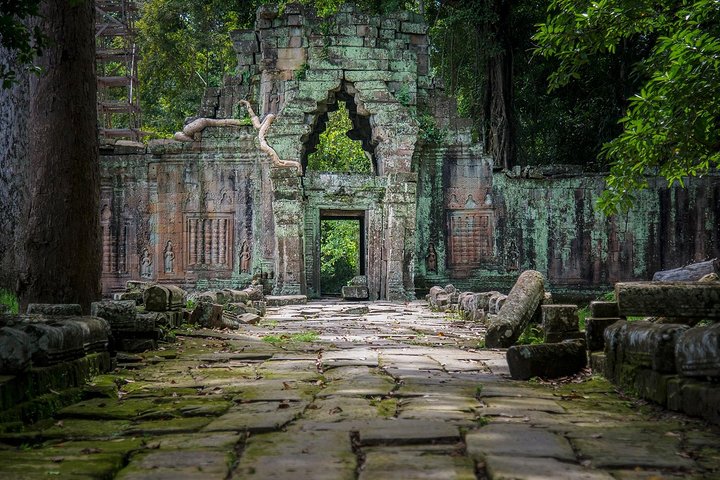Cycling Through Cambodia: A Day of Serenity and Reflection
Seeking a unique blend of relaxation and reflection, I embarked on a cycling adventure through Cambodia’s paddy fields, culminating in a visit to the somber Killing Fields. Join me as I explore the serene countryside and delve into the country’s poignant history.
A Journey Through Cambodia’s Countryside
As a digital nomad, I often find myself seeking out unique experiences that allow me to connect with the local culture and history of the places I visit. When I heard about the Tuk Tuk Adventure in Tonle Bati, I knew it was an opportunity I couldn’t pass up. The idea of cycling through the serene paddy fields and visiting the somber Killing Fields seemed like a perfect blend of relaxation and reflection.
The day began with an early morning pickup from my hotel in Phnom Penh. Our guide, Thong, and the support car driver, Lee, greeted us with warm smiles and a sense of adventure. After a short drive out of the bustling city, we arrived at a small village temple where we had a chance to stretch our legs and take in the peaceful surroundings. The temple, though modest, was a beautiful introduction to the rural life of Cambodia.
Once the bikes were assembled, we set off on our cycling journey. The path was mostly flat, with a few muddy patches from the previous night’s rain, but nothing too challenging. As we pedaled through the village roads, Thong shared insights about the local flora and fauna, making the ride both educational and enjoyable. The lack of traffic allowed for easy conversation, and I found myself immersed in the tranquility of the countryside.
Discovering Local Flavors and Traditions
Our first stop was a street-side café where we were offered chilled bottled water and the chance to try some local snacks. I decided to be adventurous and sampled a fried cricket. To my surprise, it wasn’t bad at all, and I felt a sense of accomplishment for stepping out of my culinary comfort zone.
Continuing our ride, we visited another village temple, where Thong explained the role it plays in the community. It was fascinating to see how these temples serve as both spiritual and social hubs for the villagers. The sense of community and tradition was palpable, and I felt privileged to witness it firsthand.
Lunch was a highlight of the day, as we arrived at the Tonle Bati Tourism site. Thong had arranged for us to dine in a floating hut on the lake, surrounded by other Cambodian families enjoying their day. The local Khmer food was delicious, and the setting was idyllic. It was a moment of pure relaxation, a perfect counterbalance to the more somber part of the tour that awaited us.
Reflecting on Cambodia’s Dark History
After lunch, the cycling portion of the tour concluded due to the rising heat. We were driven to the Choeung Ek Genocidal Center, also known as the Killing Fields. This part of the tour was deeply moving and provided a stark contrast to the morning’s activities.
With audio guides in hand, we walked through the site, learning about the atrocities committed during the Khmer Rouge regime. It was a harrowing experience, but an important one, as it offered a deeper understanding of Cambodia’s history and resilience. We spent about two and a half hours there, taking our time to absorb the gravity of what we were witnessing.
Thong and Lee waited patiently for us, and once we were ready, they drove us back to our hotel in Phnom Penh. The day had been a rollercoaster of emotions, from the peacefulness of the countryside to the somber reflection at the Killing Fields. It was an experience that left a lasting impression on me, and one that I would highly recommend to fellow travelers seeking a deeper connection with Cambodia’s culture and history.


































